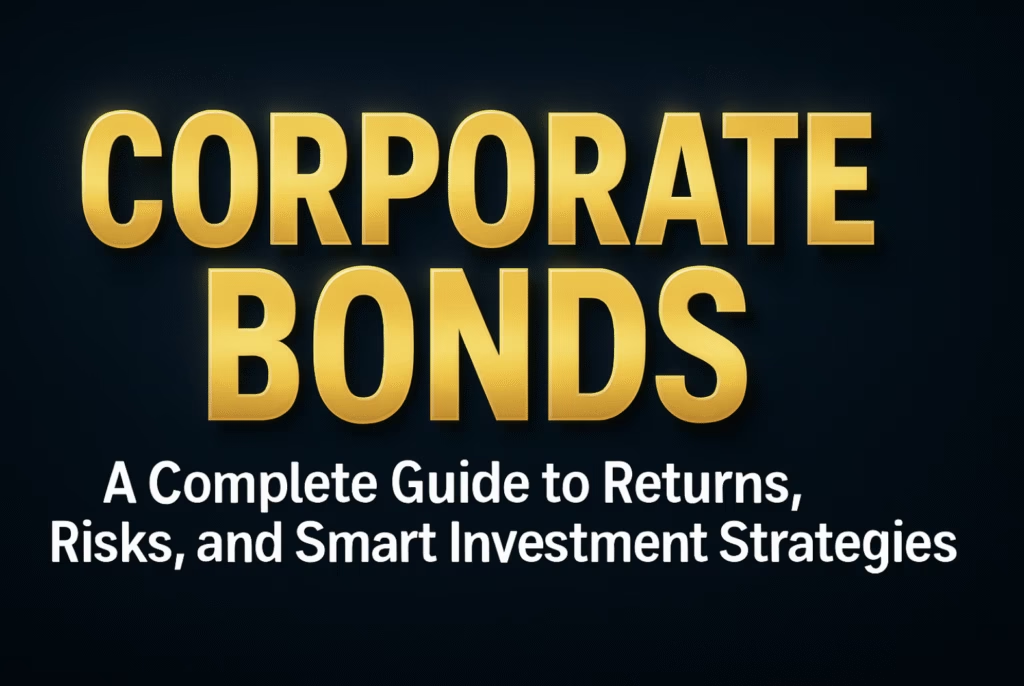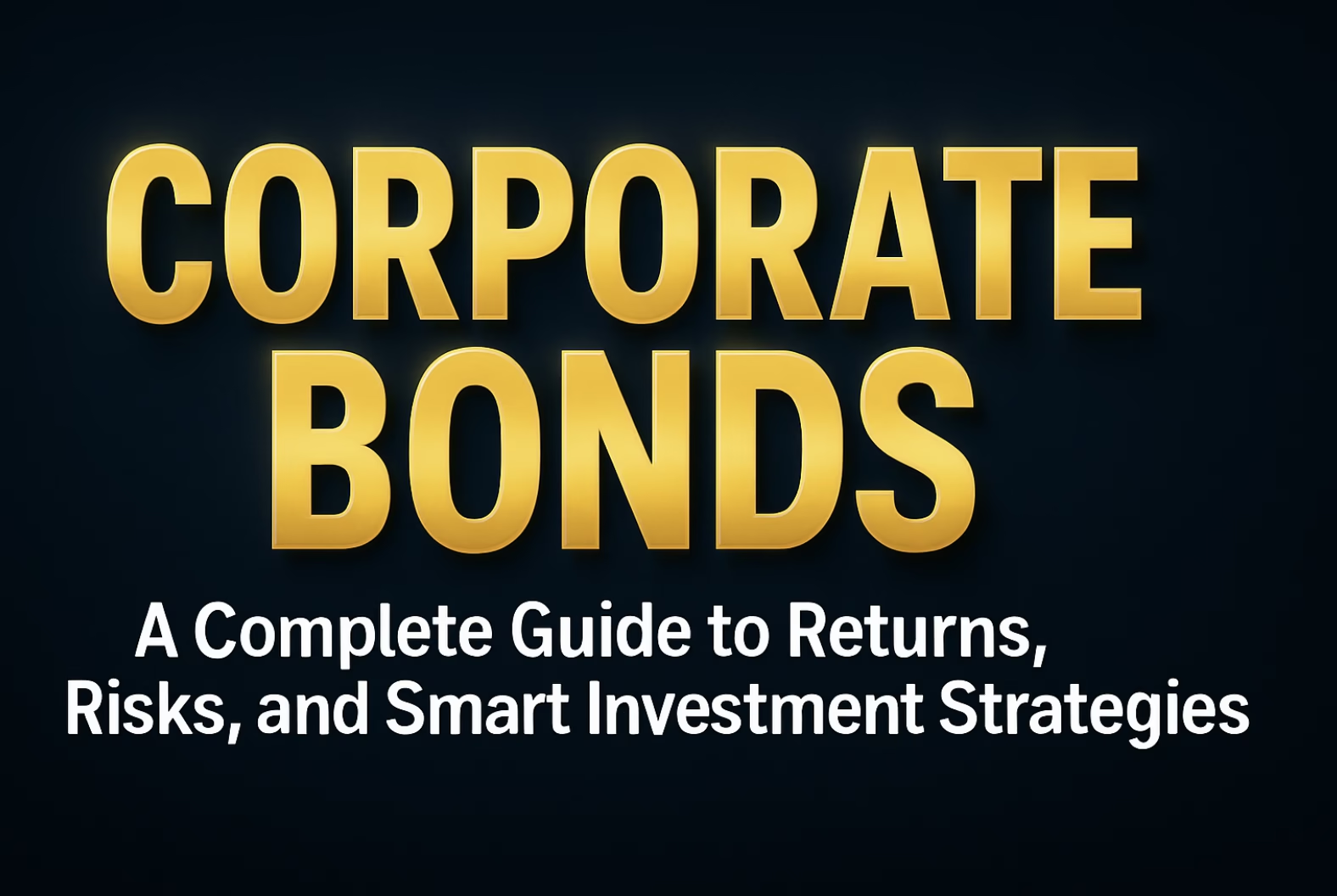When people think of investing money in bonds, the first thing that comes to mind is investing money in U.S. Treasury bonds. These bonds are “risk-free” in nature because they are backed by the U.S. government and are considered the gold standard……………

When people think of investing money in bonds, the first thing that comes to mind is investing money in U.S. Treasury bonds. These bonds are “risk-free” in nature because they are backed by the U.S. government and are considered the gold standard in safety. But safety often comes with compromising on returns. In government bonds, returns are slightly low — they can only beat inflation and give some 1 to 2% extra return because they are the safest bonds. But if any investor is willing to take a little bit of risk, then corporate bonds are the best choice for him. Corporate bonds can offer higher yields and a valuable way to diversify the portfolio.
Corporate bonds don’t come without challenges. In corporate bonds, we are dealing with the company’s creditworthiness, industry conditions, and a broader view of the economy. But if we do all of these things with the right approach, corporate bonds can be more than just a step up from government bonds — they can become the income engine of our portfolio.
What are corporate bonds?
A corporate bond is essentially an IOU from a company. You lend money to the company, and in return, they promise to pay you fixed interest (called the coupon) regularly on a half-yearly basis and return the principal (face value) at the end of the bond term (maturity).
Corporate bonds and government bonds are the same in structure, but the underlying risk of both is different. When you buy a government bond, you rely on the government to pay you interest or print money, but in corporate bonds, you rely on a business’s ability.
Example:
You purchased Apple Inc. bonds which are rated Aa1 by Moody’s — this rating is good for bonds.
You purchased Ford Motor bonds and their rating is BB by Moody’s — this rating is bad and this bond is called a junk bond.
Why consider corporate bonds?
The most compelling reason is yield. Over the long term, corporate bonds deliver 1% or 2% more return than government bonds. Now, this return may not look attractive, but in the long term, 1 or 2% makes a big difference — the compound effect can be substantial.
For instance, if you invested $100,000 for 25 years in safe government bonds yielding 5% annually, your investment would grow to around $338,635. But if you chose high-quality corporate bonds for 25 years and their return was 6% annually, then your amount would be around $429,187. That’s a difference of $90,552 because of just 1% extra return.
The risks you need to understand
Corporate bonds carry more variable risks than government bonds. This means we have to be more careful before choosing them.
Credit risk
If the company’s financials are not in good health, the chances of default are high. The return is also high, but so is the risk. That’s why, before choosing bonds, check their credit ratings.
Callability
Many corporate bonds are callable, meaning the issuer of the bonds can redeem them early (often when the interest rate is low). This can cut off your chances of getting higher returns in the future.
Liquidity risk
Firstly, we will understand what liquidity is. Liquidity means you can sell or buy your securities whenever you want, and you can find a buyer or seller immediately for your securities. Government bonds trade in huge volumes with minimal friction, but corporate bonds do not always. Sometimes selling a corporate bond is slightly harder compared to government bonds.
Economic sensitivity
Corporate bonds are tied up with economic cycles. In a recession, defaults on bonds rise. Even high-quality bonds can default, or they can lose their market value.
Credit ratings your first safety filter
Credit ratings from agencies like Moody’s, S&P, and Fitch are a quick way to assess issuer risk.
AAA rating: The chances of default are very low and the quality is prime. Think Microsoft.
AA rating: Very strong quality, slightly riskier than AAA ratings. Think Apple.
A rating: Still strong but more exposed to economic shifts.
BBB rating: Lowest investment-grade rating.
BB and below: Higher yield and higher return but significantly higher risk.
According to Moody’s data, AAA-rated bonds have a 0.36% chance of default over ten years, while B-rated bonds have double-digit default risk. The yield difference compensates for that risk — but only if defaults don’t wipe out your value.
Experts’ opinion differ
Some financial strategists like David Swensen (Yale’s former Chief Investment Officer) say that the extra return doesn’t justify the complexities and risks of corporate bonds. Many retirement planners see corporate bonds as an income generation tool with relatively lower risk.
Conclusion
Corporate bonds are good for those who have interest in doing some research about bonds. They offer higher returns than government bonds, but the risk is also higher in corporate bonds. For long-term investors, a blend of corporate bonds and government bonds is a great strategy.
If picking individual bonds is overwhelming, then you can invest your money in ETFs, and you don’t have to put in much effort — but it will hurt your return a little bit. Corporate bonds remain one of the most reliable ways to invest money and a balance between income and stability.
